by Dr. Ed Berry
Here’s the untold story behind my first scientific publication where you may find the story more interesting than the publication itself. It’s a story about how what we may think is so, is not so. It’s a story that attracted a lot of attention because it showed a logic error in simple physics made by Scientific American and by some authors of books on meteorology.
All high-school physics students can understand the physics but you may be surprised at the answer.
Here’s the problem.
Tie a small weight, say a fishing sinker, to a 3 ft length of kite string. Hold the end of the string in your hand and whirl the weight around in a circle. Then stick your finger in the path of the string, hold your hand steady, and let the string wind up around your finger.
Question: Does the speed of the weight increase as it winds closer to your finger?
According to Scientific American’s “The Amateur Scientist” of April 1960, the weight speeds up. Here’s what C.L. Stong wrote (pp 183-184):
- The effect can be demonstrated by a primitive experiment that all of us have made at one time or another. Swing a small weight in a circular orbit at the end of a string, and let the string wind up on your finger as depicted in the accompanying illustration.
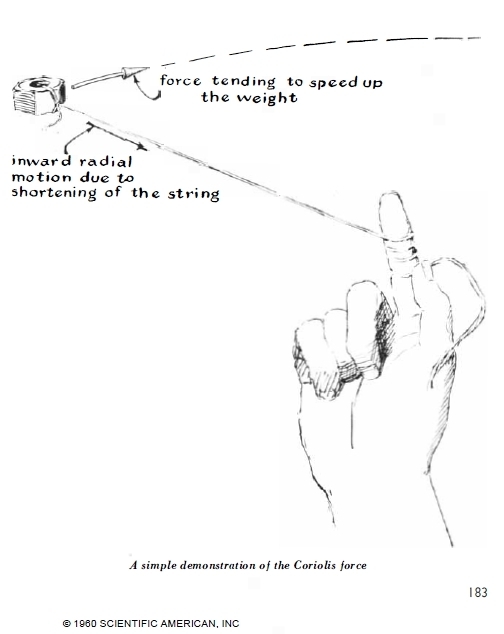
- The result is always the same. As the length of the string decreases, the speed of the weight increases. It is a law of nature. The weight has a radial velocity toward your finger because of the shortening of the string. The radial velocity interacts with the rotational velocity to produce an acceleration that is tangential to the path of the weight and thus acts to speed up the weight.
- Students of Newton’s laws recall that force equals mass times acceleration, so that it is permissible to think of a force that causes the weight to speed up. The result is quite general. When a body in rotational motion also moves in a radial direction, a force acts to speed up the body if the radial motion is toward the center of rotation.
- This force is called the Coriolis force in honor of Gaspard Gustave de Coriolis, a French engineer and mathematician of the early 19th century. Both the speeding-up and the slowing-down effects can be observed with the weight-on-the-string experiment, speeding up as the string winds up on the finger and slowing down as the string unwinds.
The above “explanation” is not physics. It’s too complicated to be physics. Physics is logical and simple.
Thankfully, I learned physics at Caltech and Dartmouth. Otherwise, I might have suffered brain damage by attempting to understand Stong’s “explanation”:
Here’s the whole Scientific American article in case you want to read it:
So I sent this letter to the Editors of Scientific American:
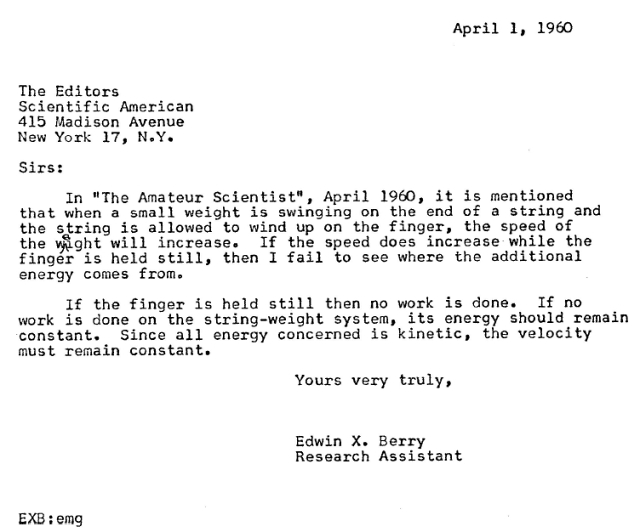
You can see these were the old days when ancient people (like me) pounded out letters “ka-chunk, ka-chunk” on heavy typewriters and made mistakes not worth correcting (like the period after my middle name). A secretary with the initials “emg” typed this letter for me.
Having a typewriter of my own was above my pay grade. I had finished my M.A. in Physics at Dartmouth and was doing follow-on research for Professor Millet G. Morgan of the Thayer School of Engineering, Dartmouth College.
Millet Morgan told me he graduated from Cornell with some guys named Hewlett and Packard. They asked him if he would join their new start-up company that they would name Hewlett, Packard, and Morgan. But Morgan decided to teach at a university instead. But, as most physicists do, I digress.
In return, Stong and Professor of Engineering Mechanics, F. W. Niedenfuhr, of The Ohio State University, sent me a letter explaining my “error.” I’ve lost their letter but they used some numbers to illustrate how, according to the theory of conservation of angular momentum, the speed of the weight would increase as the string wound up.
Frustrated that they missed my point, I sent them this letter wherein I changed the numbers on their example to make my point:
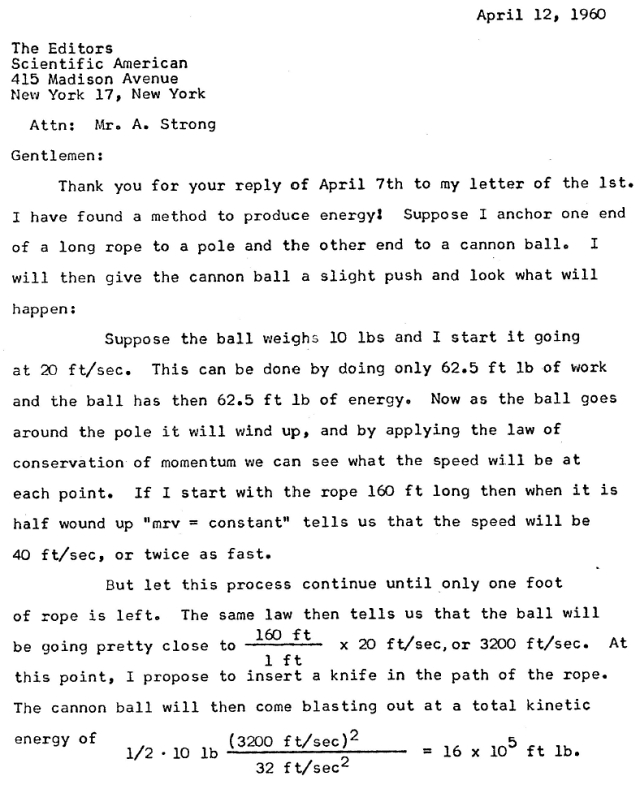
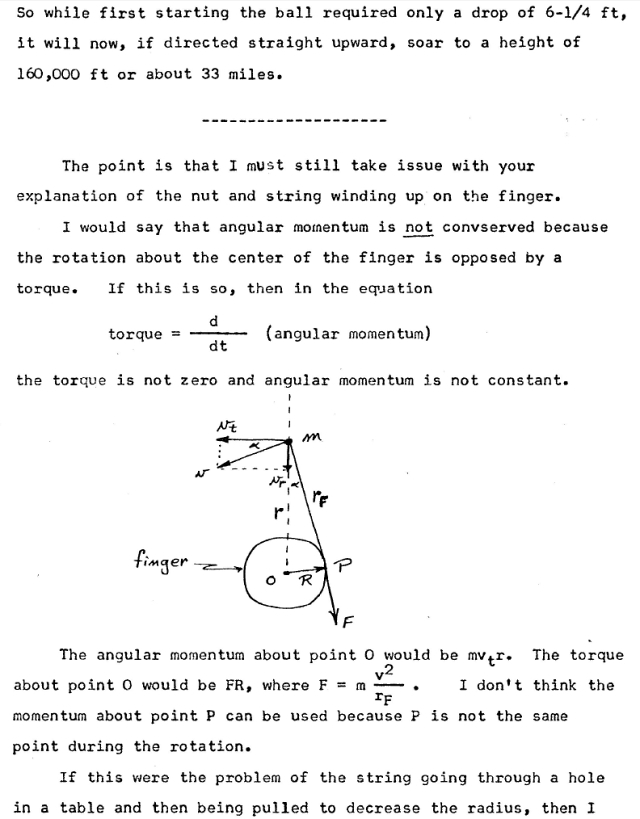
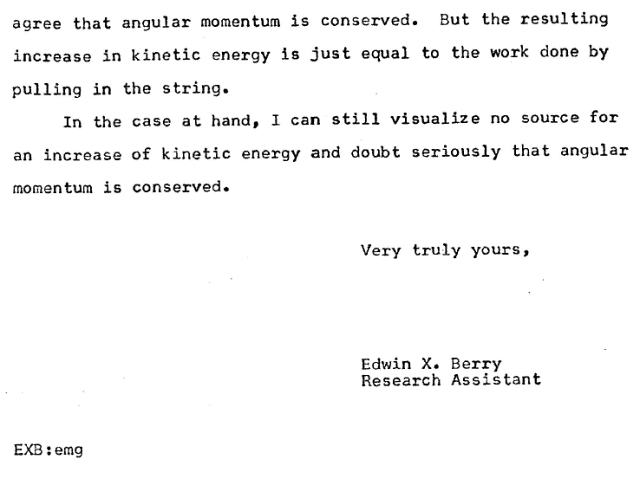
My second letter finally got Stong’s attention. Here’s his reply:
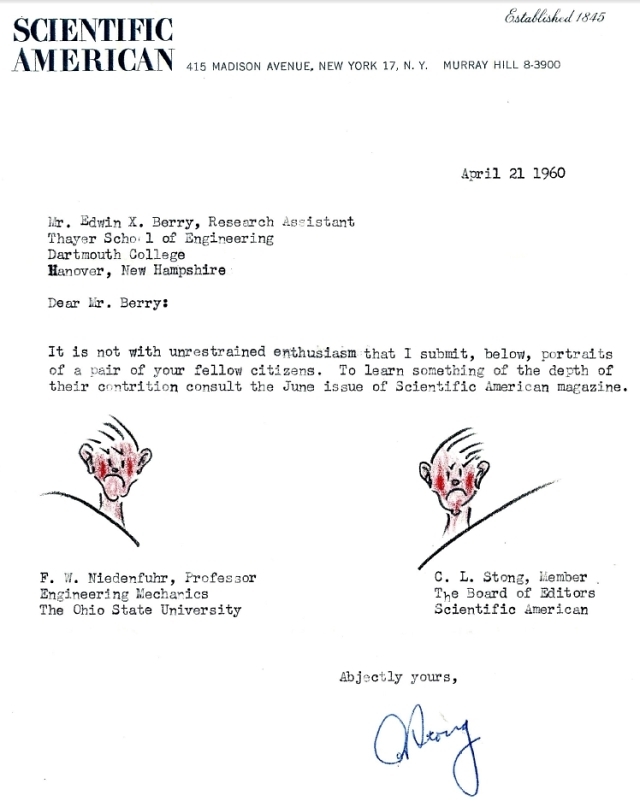
Stong made the correction in the June 1960 Scientific American, writing:
- This suggests the conservation of angular momentum, when in fact it is the energy of the system and not the angular momentum that is conserved.
However, his correction left much to be desired because he still tried to explain this simple experiment in terms of Coriolis force.
Three years later
Three years later, I was a research assistant working on my PhD in physics at the University of Nevada. It was a new program and I was the first research assistant for the new Desert Research Institute, and its third employee.
Since my physics focus was atmospheric physics, I read many books on meteorology. In several of these books I found the same error being made that I had corrected in the Scientific American in 1960. So, after discussion with my thesis adviser, I wrote my article on this subject and submitted it to the American Journal of Physics.
Here is a copy of my publication:
Louis Battan was the first to reply to my publication. Battan was a good meteorologist but his letter shows not all good meteorologists understand physics. I owe a debt to Louis Battan because he was the one who told me about Wendell Mordy starting up the Desert Research Institute when I was searching for a university to get my PhD in atmospheric physics.
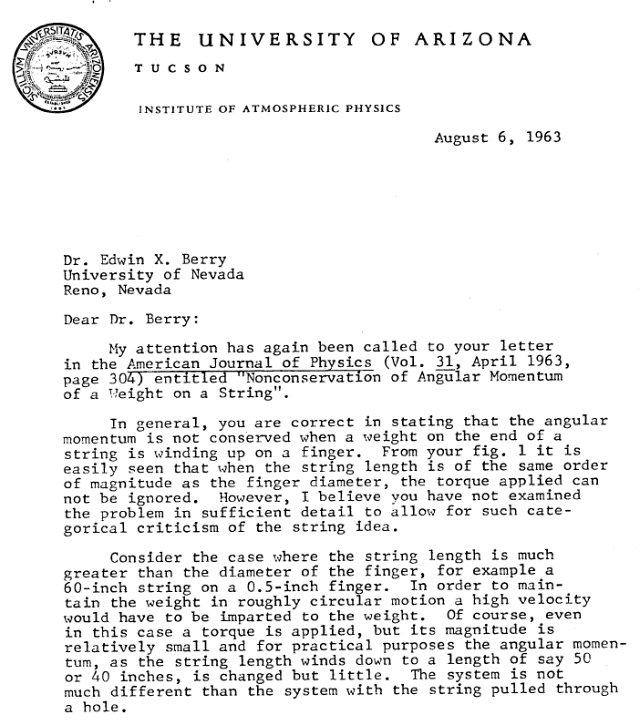
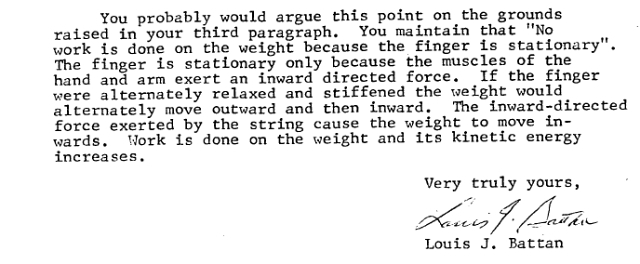
In case you missed it, the physics of the issue has nothing to do with the relative size of items in my Fig. 1. Here is my reply to Dr. Battan:
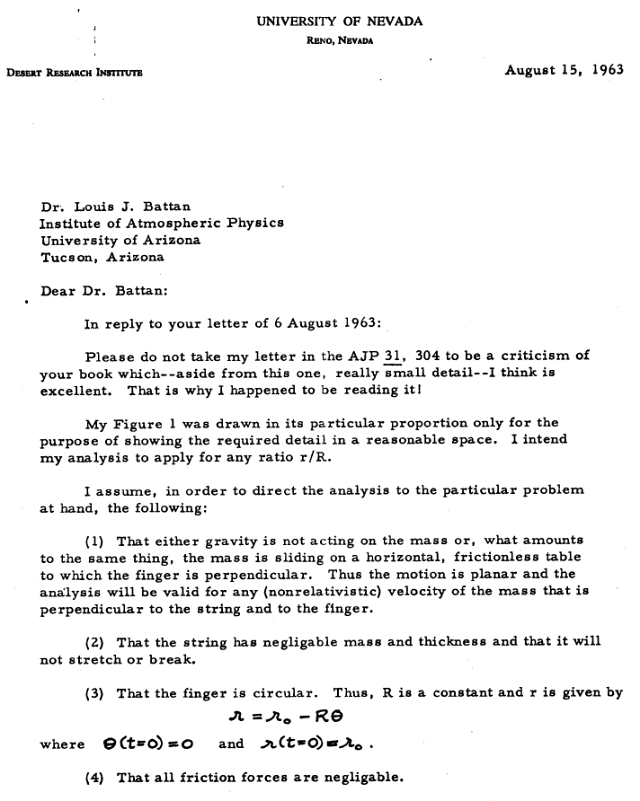
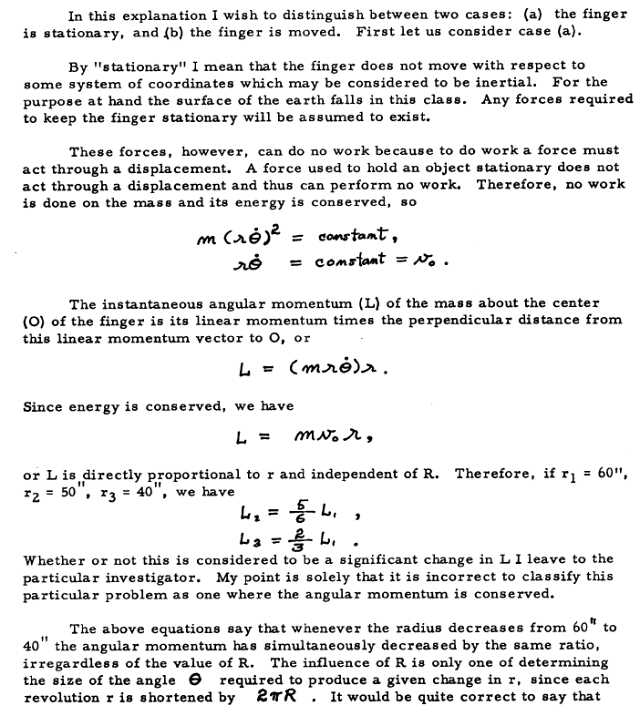
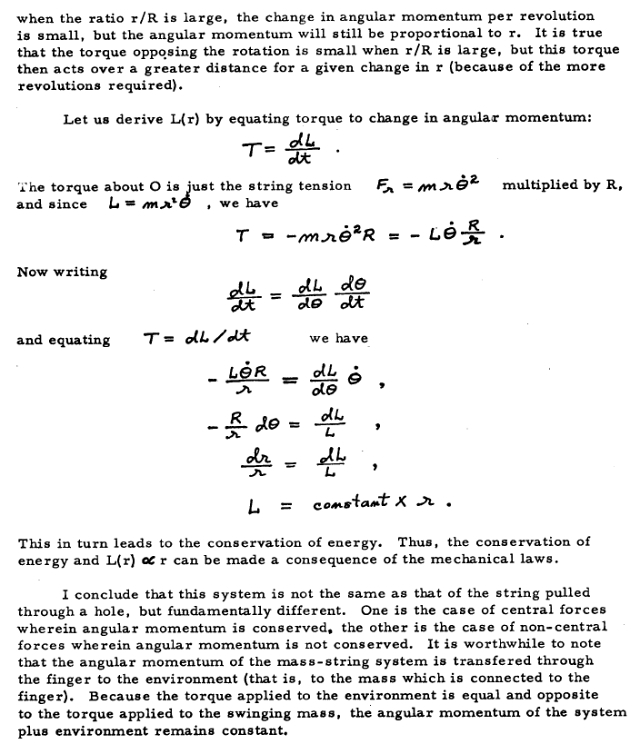
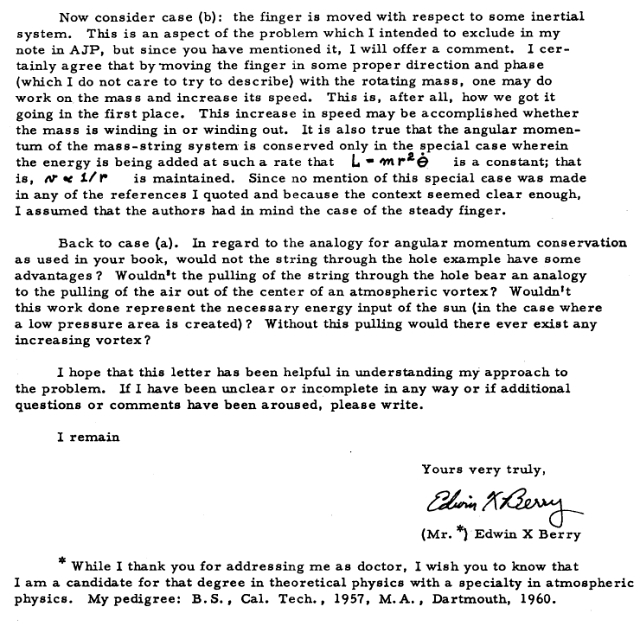
You will notice I had not yet perfected my scribbly signature in 1963 that all doctors are required to do.
Test of my hypothesis
Dr. Wendell Mordy was my PhD thesis supervisor and my mentor in meteorology. Dr. Friedwart Winterberg and Dr. William T. Scott were my mentors in physics. I could not have wished for better mentors for my PhD degree.
In the summer of 1963, Dr. Mordy arranged for Dr. Wurtele, a meteorologist from the University of California in Los Angeles, to visit us in Reno and to teach me a few things about meteorology.
Dr. Wurtele was interested in my publication “Nonconservation of Angular Momentum of a Weight on a String” and he had an idea to do a simple experiment.
We found a room with small, shaded windows and set a secure stand on the floor in the middle of the room. Then we put black velvet on the floor and a camera and strobe light on the ceiling. We opened the camera shutter, started the strobe light and I threw the weight on the string horizontally. The camera recorded the motion of the weight as it wound up on the post.
(For the record, we used a Polaroid 3000 camera with 3200 ASA film. We set the camera at its widest lens opening, about F3.5. The camera was 8 ft above the experiment. We set the stobe at 40 cps. The pole diameter was 3.0 cm.)
If my theory is correct then the speed of the weight, shown by the distance between strobe flashes, will be constant. If the weight speeds up then the distance between strobe flashes will increase as the string winds up. Of course, I knew I was correct.
Here are the photos, one with a white string and one with a black string. Rotation is clockwise.
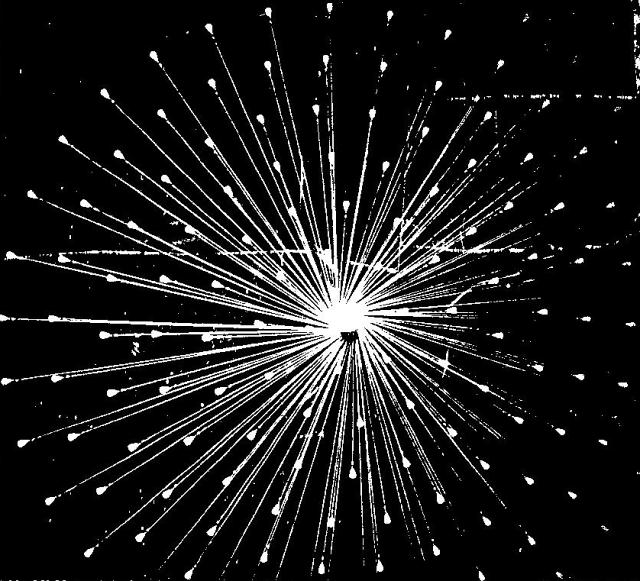
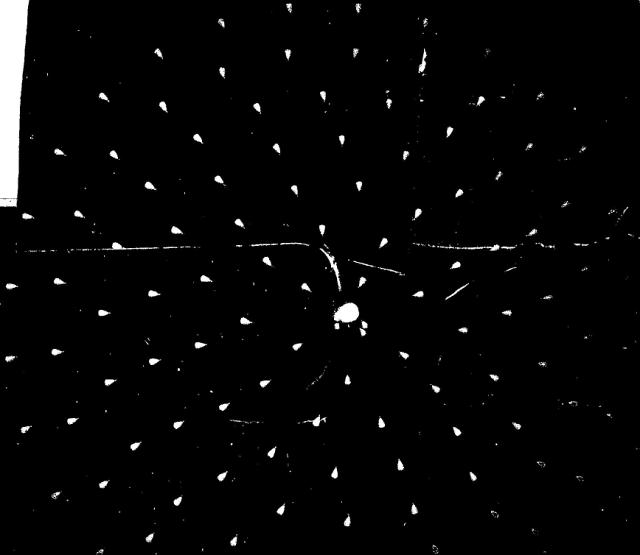
The resulting photos show the weight maintained a constant distance between strobes as the string wound up on the post. The constant distance means the speed of the weight did not change during the wind up. If momentum, rather than energy, were conserved then the distance between strobes would have increased as the string wound up.
Acknowledgement
By coincidence, here is a photo I took of Dr. Wurtele and Dr. Winterberg on the day of our experiment on August 29, 1963.
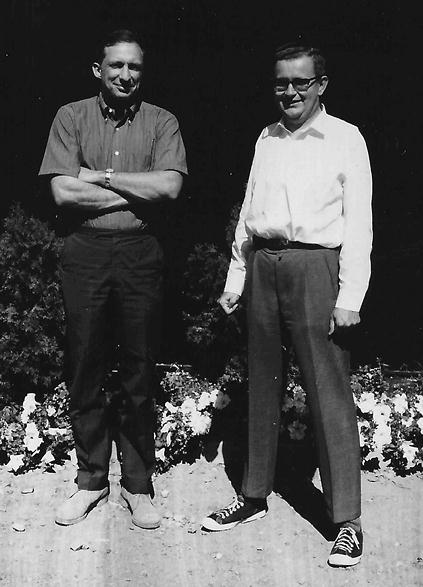
I owe a great debt to Dr. Friedwart Winterberg, my mentor and friend who has taken physics beyond the dreams of novelist Arthur C. Clark.
Winterberg’s mentor was Werner Heisenberg who won the Nobel Prize in Physics in 1932. Heisenberg said Winterberg was his best student. As one who had the distinct privilege to learn advanced physics from Friedwart Winterberg in the 1960’s, I can understand why.
Have you heard of the “black hole firewall“? Winterberg is on the leading edge of this theoretical research.
Friedwart Winterberg is one of the world’s outstanding physicists. He is also a teacher who makes complex physics simple. You have to make physics simple before you can take physics to where no one has gone before.

Dr. Berry:
The laws of physics will prevail in all areas, including climate science, regardless of who misreads them. Your perseverance in promoting good physics is admirable.
It is obvious to some of us that there is no energy input to change the speed of the weight. That others did not see this fact is a lack of understanding or knowledge of physics on their part. Nevertheless, they believe what they are saying.
One can only try to educate them, but as you have experienced, it is a difficult task.
To conduct a strobe light experiment is very thoughtful on your part and is the clincher!
Keep up the good work.
H. Douglas Lightfoot
Pingback: Publications - edberry.com
Pingback: Publications - edberry.com